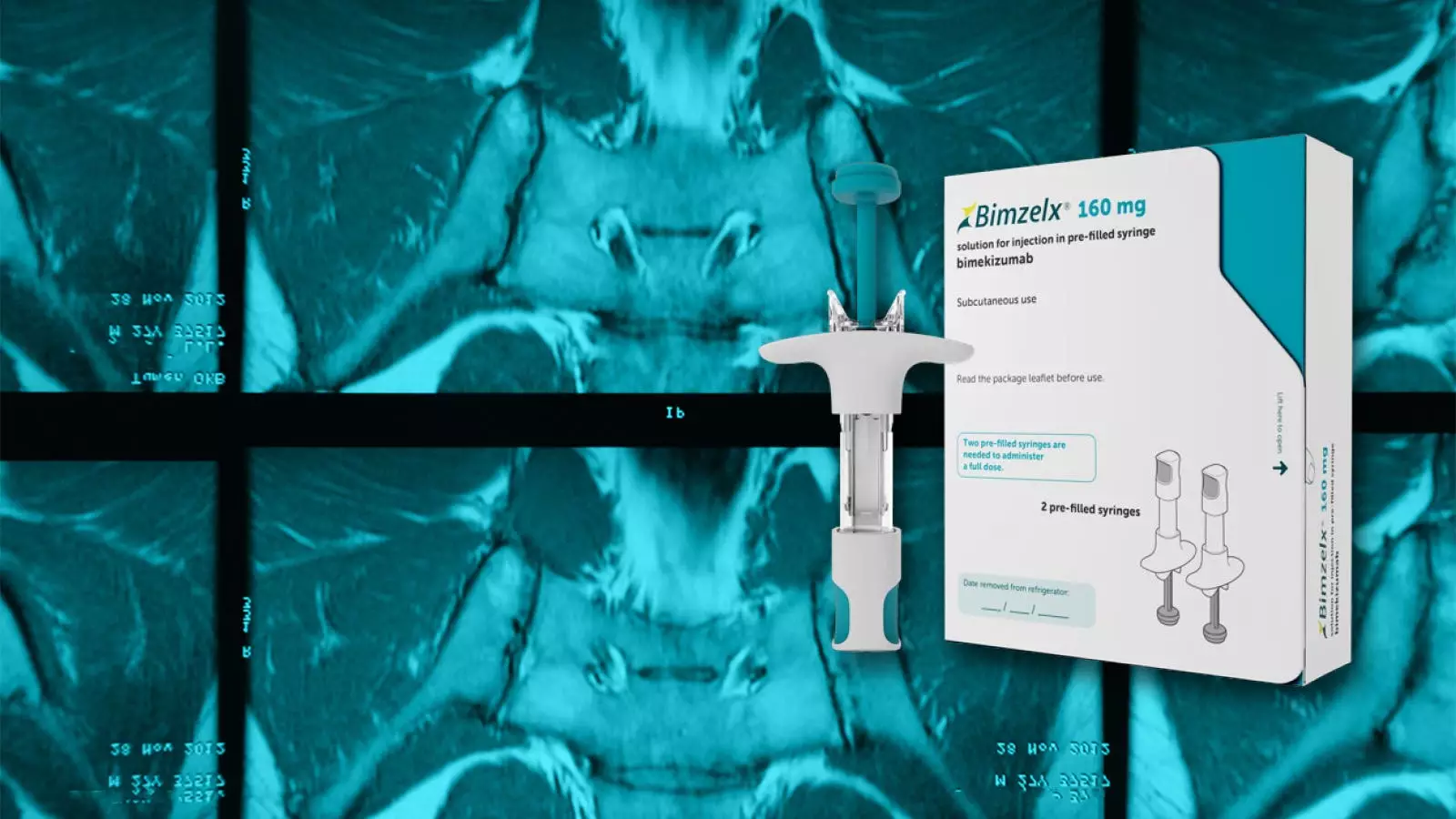In the treatment of axial spondyloarthritis (axSpA), researchers have been exploring the potential of bimekizumab, an interleukin-17 (IL-17) blocker. Recent studies have revealed promising efficacy results, with more than 60% of patients classified as responders after 1 year of continuous treatment with bimekizumab. However, despite its potential, the future availability of bimekizumab in the U.S. market is uncertain. This article aims to analyze the full 52-week results of the phase III trials of bimekizumab in axSpA, as well as its unique mechanism of action and associated safety profile.
The phase III trials of bimekizumab in axSpA demonstrated strong efficacy, with Assessment of SpondyloArthritis International Society ratings (ASAS40) serving as the primary efficacy endpoint. After 1 year of continuous treatment, more than 60% of patients achieved at least a 40% improvement in ASAS40. Additionally, patients initially randomized to placebo but switched to the active drug after week 16 achieved similar responses by week 52. Notably, response rates continued to increase for certain subgroups, with no decline in response rates observed.
Bimekizumab stands out from other biologics used in axSpA treatment due to its ability to target both IL-17A and IL-17F. While IL-17A is considered more biologically active, IL-17F is enriched in the skin and synovial tissue of patients with spondyloarthritis. This dual targeting approach makes bimekizumab a potentially more effective treatment option compared to biologics that inhibit IL-17A only, such as secukinumab (Cosentyx).
Market Approval Challenges
Despite the promising efficacy results, the path to market approval for bimekizumab has faced challenges. The drug’s developer, UCB Pharma, initially focused on plaque psoriasis for marketing authorization and obtained approvals in multiple countries. However, the FDA raised concerns following an inspection of UCB’s manufacturing plant in Belgium, leading to delays in the approval process. Although a successful re-inspection was conducted in April, the timeline for market availability in the U.S. remains uncertain.
The phase III trials, known as BE MOBILE 1 and BE MOBILE 2, enrolled approximately 600 patients with clinical and radiographic axSpA, respectively. The participants were randomized to receive either bimekizumab or placebo, without additional background medications. Bimekizumab was administered via injection every 4 weeks, with a treatment duration of 16 weeks. The primary and secondary endpoints were evaluated at this point, followed by an open-label extension phase where the placebo groups were switched to the active drug.
During the 52-week trials, the safety profile of bimekizumab was assessed. Although more adverse events were observed after the 16-week randomized phase, discontinuations due to treatment-emergent adverse events (TEAEs) remained uncommon. The most common adverse events were relatively minor, such as nasopharyngitis and headache. However, infections were a concern, with serious infections occurring in 2% of participants. Oral candidiasis was reported in 8% of patients, and fungal infections in over 15% of patients. Hepatic events were reported by 11% of participants. Notably, neutropenia was rare, affecting only about 1% of patients. No major cardiovascular events or malignancies were reported.
The 52-week results of the phase III trials demonstrate the strong efficacy of bimekizumab in treating axSpA. The dual targeting of IL-17A and IL-17F makes it a promising treatment option for this condition. However, regulatory challenges have delayed its potential availability in the U.S. market. Importantly, the safety profile of bimekizumab was consistent with previous evidence, although infections were a concern. Further research and regulatory approvals are needed to fully establish the efficacy, safety, and market availability of bimekizumab for axSpA.


Leave a Reply